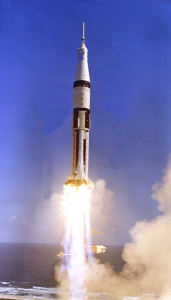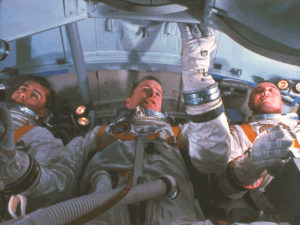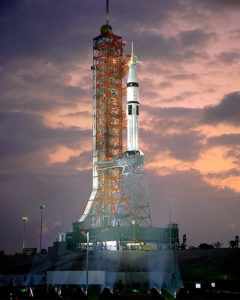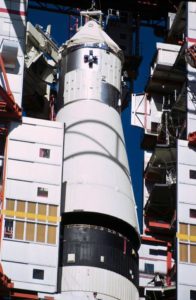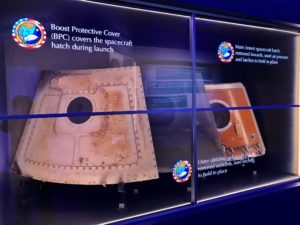February 21st, 1967 was the original planned launch day for the Apollo 1 mission. Of course, we all know the fire on January 27th put a grinding halt on the Apollo program until the problems that caused the death of the crew could be isolated and solved An American wouldn’t fly in space again until October of 1968, 18 months later, with the Apollo 7 mission, a mission that in many ways was what Apollo 1 was to be.
The actual flight of Apollo 1 was to simply be an Earth-Orbit shakedown test of the Apollo Command – Service Module system. Planned for up to 2 weeks, the mission was to stress test the Block-1 vehicle components – fuel cells, the guidance computer, the main engine, the maneuvering systems, and more. While the Block-1 machine lacked a docking mechanism and had other changes from the Block-2 design, the core components were similar enough for NASA to test the core of the machine before they began lunar module crew testing with Block-2 Spacecraft, eventually leading towards a landing.
Had the flight succeded, the next test flight would have used 2 Saturn-1B boosters (the same smaller Saturn rocket that Apollo 1 would have, and Apollo 7 later would use) to launch a Block-2 CSM, and a Lunar Module for Earth-Orbit tests. This mission would eventually happen as Apollo 9, but that flight would make use of an entire Saturn V booster, the type used on the actual Moon missions.
We were working with what we had. Apollo had grown into quite a mess by 1967, and it shows most vividly in the Apollo 1 fire. That caused a complete reset in the program, using only Block-2 Apollo hardware, upgraded with new safety features, to a much more streamlined and in some ways even more ambitious flight program, and in 5 flights, Apollo’s 7, 8, 9, 10, and finally, 11, we were standing on the Moon.
Apollo would continue Moon missions until Apollo 17. We all know of the “successful failure” of Apollo 13, but many people don’t know the final 5 missions of the Apollo-Saturn hardware legacy. The final Saturn V launch would send our first (and only) space station, Skylab, into orbit. 3 More Saturn 1B launches (much like Apollo 1 or 7) would send crews to this space station in 1973, and in 1975 the final Apollo-Saturn launch would send a crew to dock with a Soviet Soyuz vehicle, effectively ending the Space Race as it was.
Apollo 1, sadly, never flew. The command module, after disassembly and study, was eventually stored in a facility in Langley Research Center, hidden from the public eye. Only now, in 2017, has a part of the machine been shown to the public – the complicated hatch system that sadly doomed the Apollo 1 crew.
Still, Apollo 1 did more in some ways to keep the program on track than any other event. Success from tragedy, so they say, is the legacy of Apollo 1.
Oh, as for the Saturn 1B that was to launch Apollo 1, SA-204, it was later used for the Lunar Module test flight, Apollo 5, a year later.
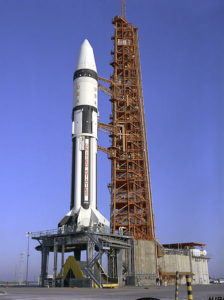
The SA-204 Booster, originally planned for Apollo 1, was used for the Lunar Module test mission Apollo 5
https://en.wikipedia.org/wiki/Apollo_Command/Service_Module
https://en.wikipedia.org/wiki/Saturn_IB
https://en.wikipedia.org/wiki/Canceled_Apollo_missions#Planned_missions_prior_to_Apollo_1_fire

